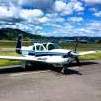Antenna Troubleshooting
-
Members Online
- MaxwellSmart86
- dkkim73
- Danb
- TCC
- charlesual
- Joshua Blackh4t
- LOCOLJ
- Flyler
- AndreiC
- James Garner
- richardbrochu27
- A64Pilot
- Scott Dennstaedt, PhD
- dzeleski
- varlajo
- MDMooney
- eman1200
- bixmooney
- Eric Burris
- SScott
- ProtoFly
- ta2too
- jcovington
- mluvara
- tailgator
- Utah20Gflyer
- V1Rotate
- IvanP
- billy hellcat
- MikeOH
- Rwsavory
- Ragsf15e
- DXB
- jetdriven
- N201MKTurbo
- M20F
- KSMooniac
- takair


Recommended Posts
Join the conversation
You can post now and register later. If you have an account, sign in now to post with your account.